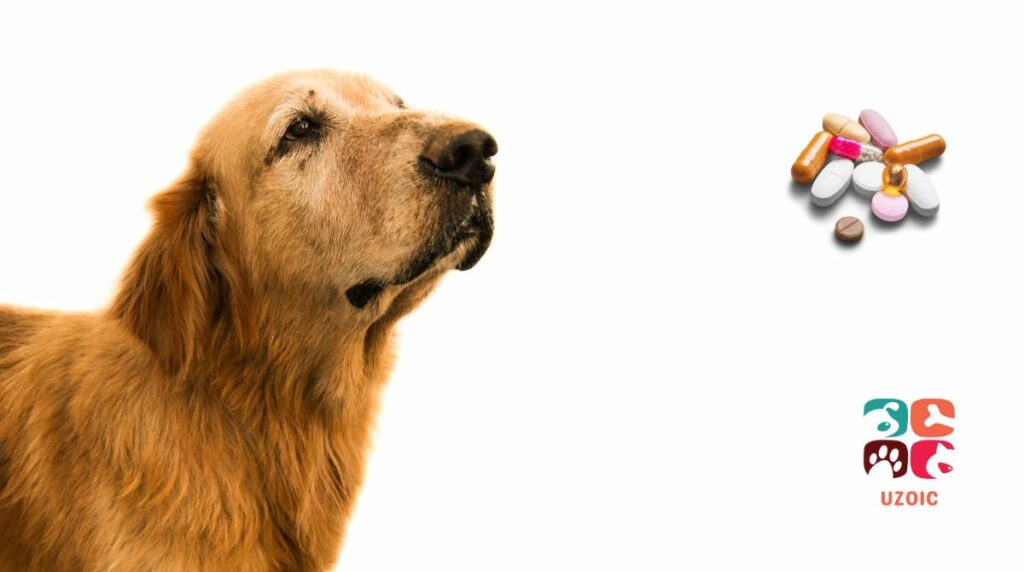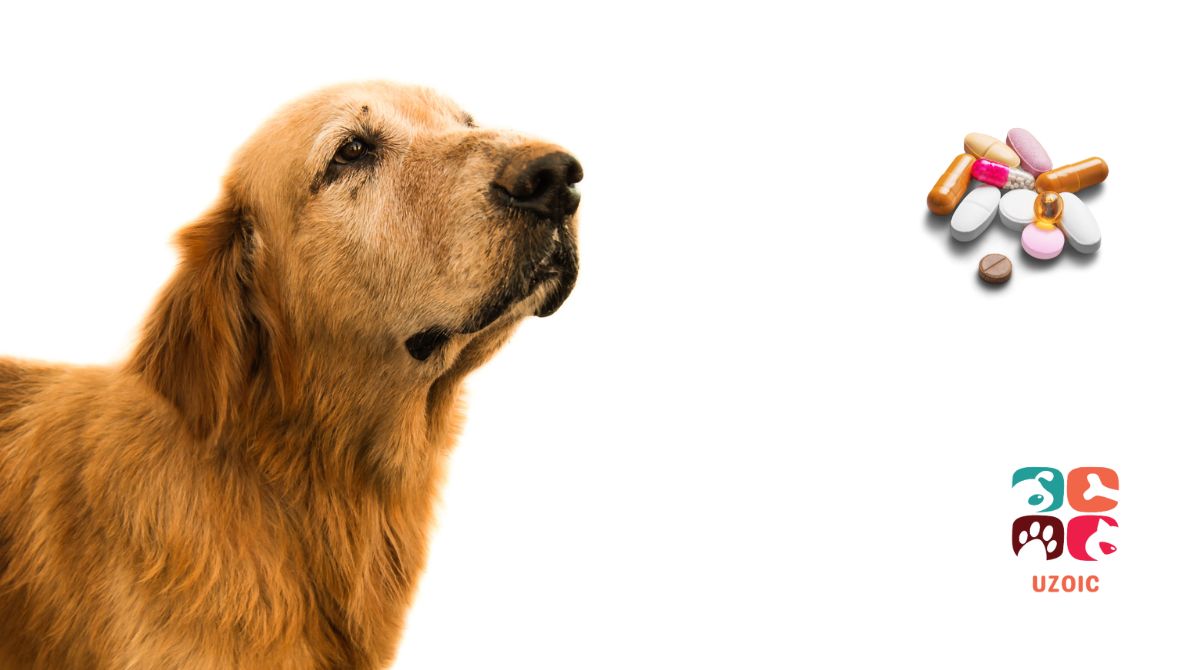If your dog ate Imodium, you might be wondering what to do. Imodium is a medication meant to treat diarrhea in humans. While vets do prescribe it to treat diarrhea in some dogs, it is not meant for all dog breeds and can be dangerous if ingested. This article will discuss the dangers of Imodium for dogs and what you should do if your dog eats it.
If your dog has eaten Imodium, the first thing you should do is call your veterinarian. They will be able to advise you on what to do next and whether or not you need to bring your dog in for treatment. Imodium can be dangerous for dogs and can cause severe health problems. Therefore, if your dog is showing any signs of illness, such as vomiting or bloating, it is important to seek veterinary care immediately.
Do not give your dog any human medications without first consulting with your veterinarian. Many human drugs are not safe for dogs and can cause serious health problems. If you have any questions about giving your dog medication, always consult with a professional before doing so.
Table of Contents
What Should I Do If My Dog Ate Imodium?

If your dog has eaten Imodium, you should first try to determine the amount of leftover medication that is still in his system. If the dose was a small one and your dog does not seem to be experiencing any adverse side effects, then he may be able to recover on his own over time. However, it is still important to closely monitor his condition, and you may want to seek veterinary assistance if symptoms persist or become severe.
If your dog has ingested a large dose of Imodium, you should call your vet immediately for further advice and treatment options.
Imodium usually stays in the dog’s system for 24 hours. It is important to note that Imodium may react to certain ongoing medications of your dog, such as vitamins, supplements, and medicines containing amiodarone, carvedilol, CYP2B11/CYP2D15/CYP3A12 substrates, erythromycin, gemfibrozil, ketoconazole, itraconazole, quinidine, tamoxifen, trimethoprim, and sulfamethoxazole, or verapamil. [Source: VCAHospitals]
What Happens If My Dog Ate Imodium?
They may experience a range of unwanted side effects, including bloating, constipation, stomach cramping, and abdominal pain. In some cases, dogs who have had too many Imodium pills may even go into shock or experience seizures.
The side effects may be more pronounced in dogs with low thyroid levels, liver, kidney issues, and respiratory problems.
If you notice any of these symptoms in your dog after ingesting Imodium, it is important to seek medical attention.
Will Imodium Hurt A Dog?
In low dosage, Imodium may not hurt a dog and can treat diarrhea in many dog breeds, but it can have adverse reactions in others. Therefore, dogs should not take Imodium unless otherwise directed by a professional.
Imodium is not suited for some breeds such as Collies, Sheepdogs, and their crosses. Additionally, You should not give Imodium to any dog breed with a positive MDR1 gene.
How Long Does Imodium Stay In A Dog’s System?
Studies have found that loperamide can be detected in the blood serum of dogs within 1-2 hours of administration, and traces are usually gone after 24 hours. However, various factors may affect how long it takes for Imodium to be eliminated from the body. These can include the size and breed of the dog, as well as its overall health and level of activity.
Can Imodium Make Dogs Throw Up?
Yes, it is possible. However, Imodium carries a significant risk of adverse side effects in dogs, including vomiting. Therefore, if your dog has ingested Imodium and is now vomiting, it is important to seek professional medical help.
How Much Imodium Can You Give A 15 Pound Dog?
The general rule of thumb is to give your dog no more than 0.05 mg per pound of body weight. This means that a 15-pound dog could safely take up to 0.75 mg of Imodium. However, it is always best to check with your veterinarian before giving your dog any medication, even over-the-counter drugs like Imodium.
How Much Imodium Can You Give A 20 Pound Dog?
The general rule of thumb is to give your dog no more than 0.05 mg per pound of body weight. This means that a 20-pound dog could safely take up to 1 mg of Imodium.
How Much Imodium Can I Give My 50 Pound Dog?
The general rule of thumb is to give your dog no more than 0.05 mg per pound of body weight. This means that a 50-pound dog could safely take up to 2.50 mg of Imodium.
What Is Toxic Dose Of Imodium For Dogs?
Anything over 0.05 mg per pound of body weight can be toxic for dogs. This means that a 50-pound dog could be poisoned by ingesting just over two and a half tablets of Imodium. If you think your dog has ingested a toxic dose of Imodium, it is important to seek professional medical help.
What Are The Symptoms Of Imodium Poisoning In Dogs?
Symptoms of Imodium poisoning in dogs can include constipation, bloating, vomiting, sleepiness, weakness, seizures, and even death. Imodium poisoning can also cause pancreatitis and severe central nervous system depression, which are potentially life-threatening conditions.
If you notice any of these symptoms in your dog after he has ingested Imodium, call your vet right away.
Conclusion
In conclusion, you should give Imodium to dogs only under medical supervision as incorrect doses can result in serious side effects. Also, your vet is the right person to determine whether or not you should give your breed of dog medicine containing loperamide (the active ingredient in Imodium). Certain dog breeds cannot tolerate loperamide (such as collies and sheepdogs).
If your dog has accidentally ingested Imodium, first look for the amount of medicine consumed by your dog. If it is within the safe zone, the medicine will stop working after 24 hours. If your dog has consumed a large amount (> 0.25 mg for a 50-pound dog), do not wait and seek a vet immediately as it will most likely result in Imodium poisoning. Your veterinarian will likely want to monitor your dog for signs of overdose or other complications. Blood work and other tests may be necessary.
As a preventive measure, always keep such medicines out of your pet’s reach.
We hope you found this blog post useful. Thanks for reading!
You may like:
- Yorkie Back Leg Problems: What You Need to Know
- Is A Boykin Spaniel Right For Me?
- Why Are Your Puppy’s Joints Cracking?
- How Long Does It Take For Dog Hair To Grow Back?
- Why Your Puppy Is Licking Its Crate Bars!
- Does Taste of the Wild give dogs diarrhea?
- Why Does My Dog Keep Pooping On The Sofa?
- Why Does My Dog Freeze When I Put Clothes On Him
- Why Does My Dog Lick My Pillow: The Surprising Science Behind Canine Behavior


